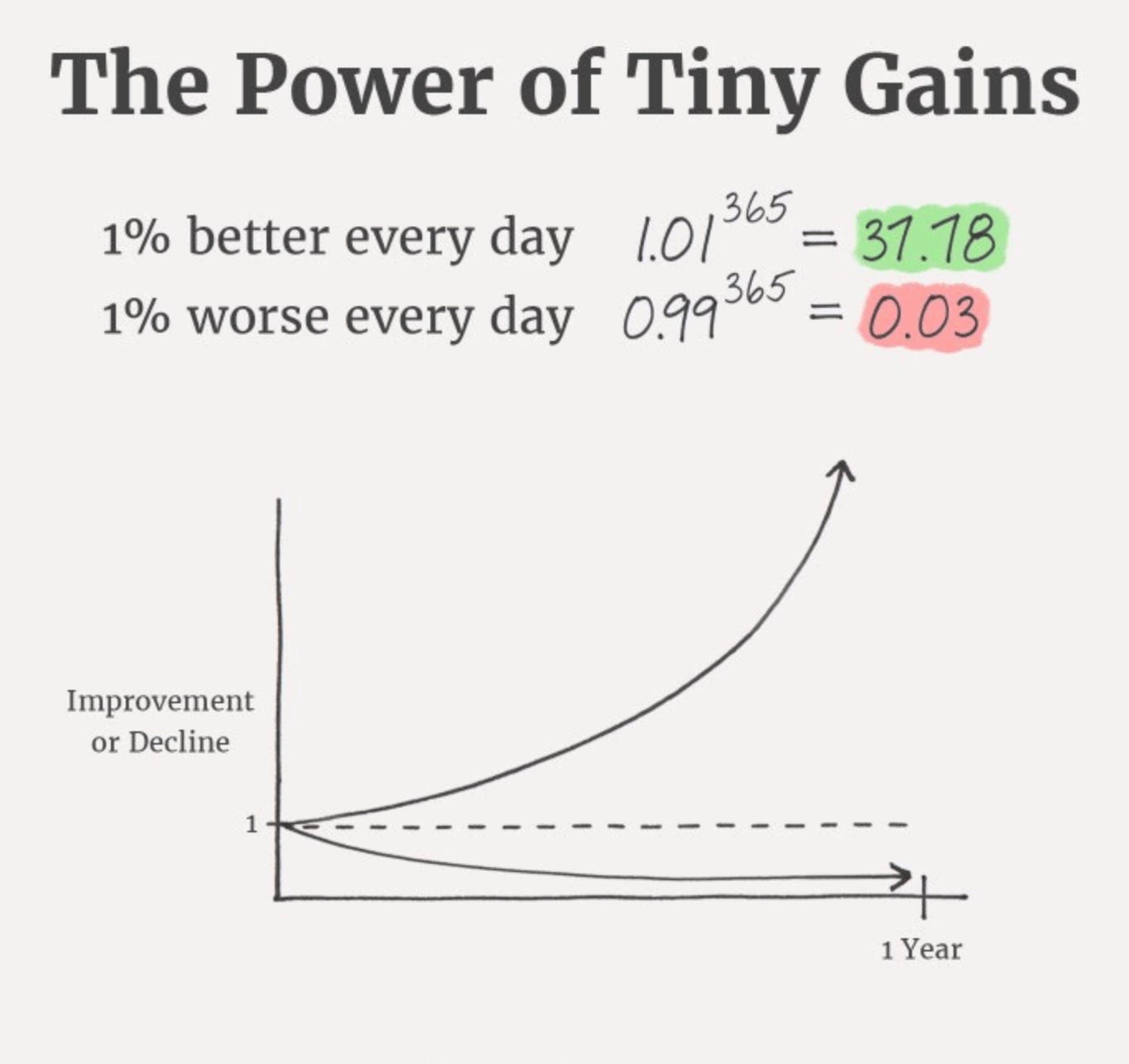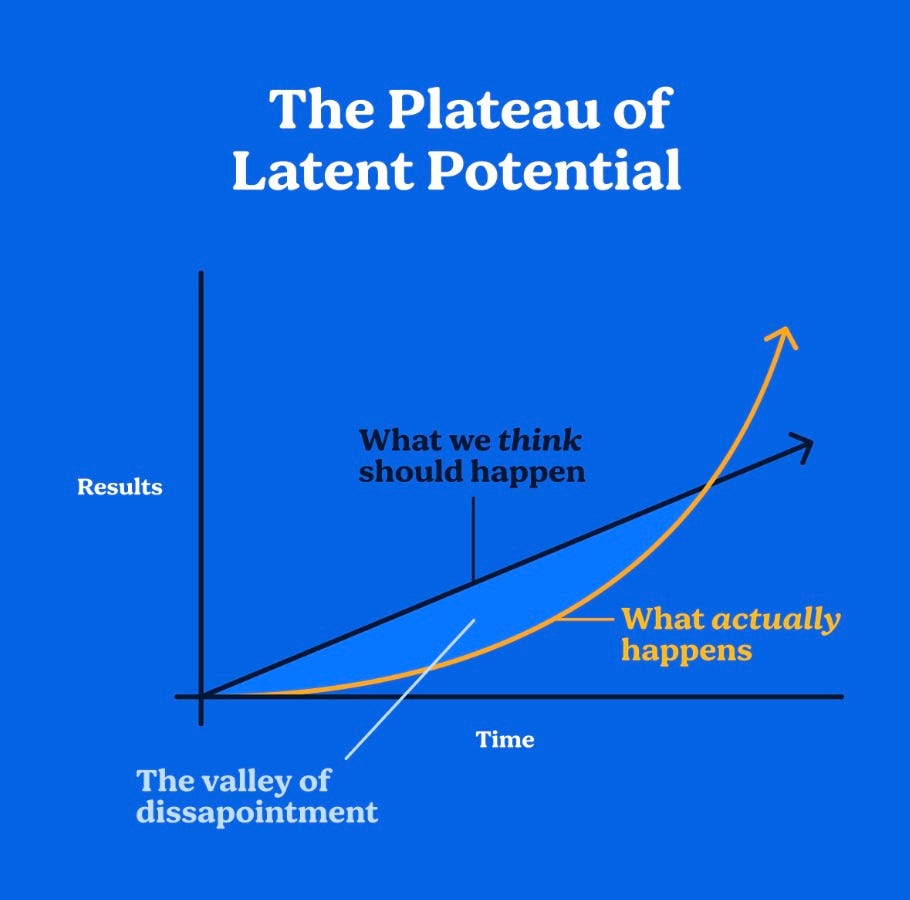Why Working Out Every Day Is EASIER
Then two or three times a week
Mr. Skeptical reads the title and sighs disapproval. "Wouldn't working out every day be harder than 2 or 3 times a week?"
His voice carries the usual tone: half-mocking, half-intrigued. He’s about to be annoyed by how wrong he is.
Subconscious Fat at 30,000 Feet
On paper, six or seven sounds like more than two or three. More time, more effort, more recovery needed. But like many things in life—parenthood, military service, even posting on social media daily —the more you do something, the easier it gets.
Why?
Because repetition metabolizes resistance.
Mr. Skeptical stands up, wanting to be confrontational. “Sounds like a bunch of self-help mumbo-jumbo bullshit.”
I smile and ask, “What’s harder: brushing your teeth twice a week or every morning and night without thinking about it? Showing up to the gym twice a week demands motivation. Showing up every day? That’s just what you do.”

Subconscious Fat at 10,000 Feet
Here’s the paradox: Working out only two or three times per week feels more burdensome than doing it six or seven times. That’s because lower frequency means each workout looms larger. You negotiate with yourself. You rationalize skipping. You promise to "go harder next time."
When it’s a daily ritual—short, sharp, and consistent—you bypass the drama. Just 20 to 30 minutes. Maybe even less. You're not trying to PR your benchpress every day; you're keeping the engine warm.
Mr. Skeptical yells, “20 or 30 minutes? Didn’t you come out with a video on Monday about the best 10-minute workout ever?”
“Yes, that’s doing the Escalating Density Training, which is a brutal 10-minute workout, which should not be done every day.”
“Then what should one do each day?”
“Okay, let’s break that down into simple exercises.”

Subconscious Fat at Eye-Level
When I start working with a client after conducting a Zoom Fitness Consultation call, I assess whether they should begin with Escalating Density Training (EDT) or a daily Push/Pull one-set-to-failure routine.
“Why one over the other?”
“If it’s someone who hasn’t worked out at all in a while, I’ll often start them on EDT because that is a more cardio-respiratory workout. This will help increase endurance to get better workouts.”
“Yeah, but isn’t the 10-minute workout difficult?”
“It is, but you only need to start at twice a week. From there, you build up to three, then four times a week.”
“But I thought doing it every day was easier?”
“It is after you’ve been doing it for a while. Remember I’m talking about someone who hasn’t worked out in a long time. I start that type of client slowly with only the EDT 10-minute workout.”
“Do they just keep increasing the frequency from there?”
“No. EDT needs more rest days, so after two to four weeks I’d switch the client to a push/pull one set to failure routine.”
“And how often is that done?”
“The one set to failure push/pull routine is only five exercises, and only one set to muscle failure is done, so you don’t need as much rest.”
“But that's going to be longer than 10 minutes, right?”
“Not by much, with only five exercises to do. Let’s say each exercise takes 2 minutes, and then you rest for two minutes in between. That comes out to only a total of 20 minutes.”
Mr. Skeptical pouts his lips. “So a client would just keep going back push/pull forever?”
“No, the ideal is they work out 6 days a week and take one day off from resistance training. I’d suggest doing one of three things on your one day off: walk backwards for 15 minutes, do yoga for 15 minutes, or skip for 5-10 sets.
Practical Suggestions and Conclusions
The science agrees: habits automate behavior by shrinking the prefrontal cortex's role in decision-making. The more often you perform a behavior, the less mental energy it takes to initiate it (Lally et al., 2010).
Short workouts make this frequency sustainable. Doing 10 minutes of Escalating Density Training or 20 minutes of a Push/Pull routine with one set to failure is ideal. Resistance bands by your desk. Workout becomes punctuation, not a paragraph.
Your life is already full of rituals: coffee brewing, belt buckling, pretending you understand your cholesterol panel. Why not incorporate a quick 20-minute workout routine into that mix?
“Hmmmm, I don’t know,” says Mr. Skeptical.
Of course, he says that. He’s Mr. Skeptical. I can’t help myself and add, “You continue what you're doing and become a professional couch potato.”
He looks at me with his eyes enlarged, but he knows it’s true, for your actions help form who you are.
If you start doing workouts every day or near-daily, your body doesn’t just adapt—your identity does.
Be Aware.
Other links related to this post:
Which Muscles to Work Out When
PS Links on LinkedIn, Facebook, and Instagram. Full disclosure: Chat GPT was used to research and enhance this post.




Do these, choose one:
https://youtu.be/OsM4Ps54WzU?si=V58bONOFv6JYZLCv
https://youtu.be/N2w9B7GTaK4?si=v5RvJYHnxp-9HrR2
https://youtu.be/zK_u_V2MPaM?si=Ar0C9rHOXalZj8nq
https://youtu.be/3k-aeIQ2uGg?si=UeOAjjjgJmaGbrkj